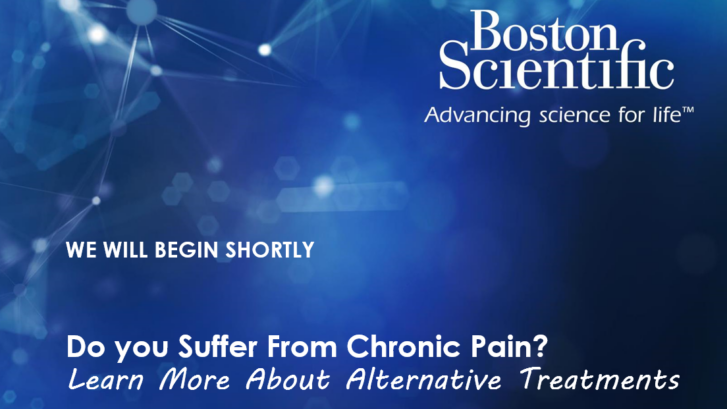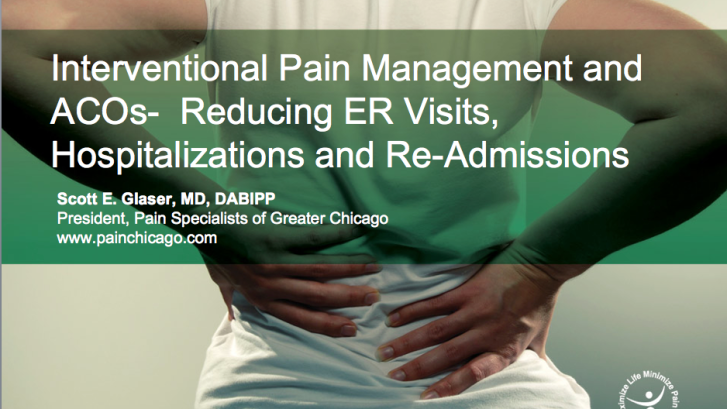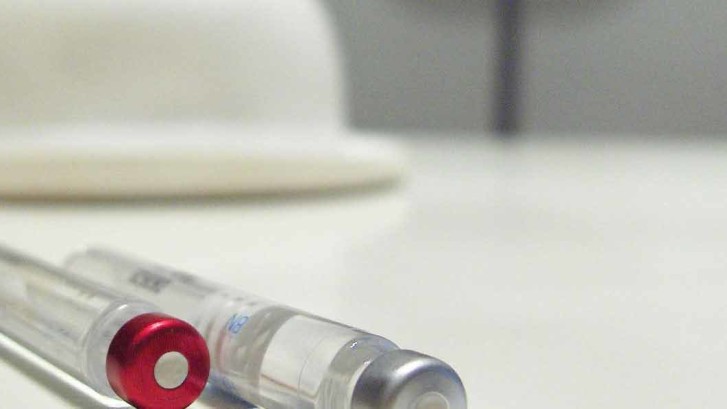Control Your Pain event; Summary
Follow up from 03/21/2023 ZOOM meeting
Please click here to download and view the powerpoint presentation from the 03/21/2023 Control Your Pain event.

Follow up from 03/21/2023 ZOOM meeting
Please click here to download and view the powerpoint presentation from the 03/21/2023 Control Your Pain event.
Please click here to view the Superion Post-Operative Care Guidelines.
Please click here to view our Interventional Procedure Instructions.

Learn how Pain Specialists of Greater Chicago is changing the paradigm and reducing ER visits, hospitalizations and re-admissions.

Dr. Glaser, president ISIPP, presided over the 2nd annual Illinois Society of Interventional Pain Physicians meeting held on January 19th which was a rousing success. 60 ISIPP members enjoyed good food and camaraderie at Harry Caray’s restaurant in downtown Chicago on a cold winter evening. They were treated to provocative and informative lectures by Dr. Gabor Racz and Dr. Joseph Fortin. Dr. Racz presented his thoughts on reducing the risks of interventional treatment, specifically interlaminar and transformational injections as well as epidural adhesiolysis procedures. The attendees were riveted by Dr. Racz as he recounted complications of interventional treatment that he was aware of. Dr. Fortin gave a well received lecture on biomechanics of the lumbar spine with an impressive audiovisual presentation. The audience gained an appreciation of the causes of injury to the spine well as the logic behind the rehabilitative process. The audience was truly multispecialty in nature comprised of physicians from a physiatric and anesthesiology background, nurses, physician assistants, radiology technicians, and physical therapists.

In a new White House study, a 400 percent jump in substance abuse treatment admissions for prescription pain relievers between 1998 and 2008.
Los Angeles
Prescription drug abuse is not just on the rise it has become a national crisis, according to a just-released White House study detailing a 400 percent increase in substance abuse treatment admissions for prescription pain relievers between 1998 and 2008.
The non-medical use of prescription pain relievers is now the second-most prevalent form of illicit drug use in America and its tragic consequences are seen in substance abuse treatment centers and hospital emergency departments throughout our nation, says Pamela Hyde, administrator of The Substance Abuse and Mental Health Services Administration, in a statement.
The statistics are being released to highlight a problem that has become all too familiar through the high-profile deaths of such celebrities as Michael Jackson and Anna Nicole Smith. But the problem affects all ages and socioeconomic strata, says Dr. Scott Glaser, president of Pain Specialists of Greater Chicago.
From 1994 to 2003, the number of prescriptions for controlled substances rose from 22 million to 354 million annually, says Dr. Glaser. The number of admissions for misuse of prescription painkillers to hospital emergency rooms rose from some 40,000 in 1994 to over 300,000 in 2008, he adds.
There has been a strong push among doctors in recent years to be more aggressive in addressing pain, he notes. This has led to the dramatic increase in opiates such as morphine, but the problem is there hasnt been a whole lot of science to go along with that.
The abuse of these strong drugs is an indication of a much more widespread cultural problem, says addiction specialist Clare Kavin of The Waismann Method, a treatment center for opiate dependency, which has treated many celebrity addicts.
We are in a culture of immediate gratification and nobody will put up with even the slightest discomfort anymore, she says. This underlying attitude leads many patients to push for stronger painkillers when lower strength but non-addictive drugs would have sufficed in the past, she adds.
We are in a perfect nightmare, says Andrea Barthwell, who has advised the White House on national drug policies. Many of the factors that have come together to fuel this explosive problem such as the lack of effective monitoring of prescriptions not just between doctors, but between pharmacies, and from state to state have been well known for years.
Glaser points out that a federal monitoring program was signed into law in 2005 but funding has languished ever since. Glaser and his colleagues from the American Society of Interventional Pain Physicians are just back from lobbying on Capitol Hill for $55 million to fund the program, which they say will pay for itself in five years.
Currently some 37 states have some form of monitoring, Glaser says, but they are inconsistent and lead to widespread abuse. He points to widespread practices such as:
Easy access to prescription drugs through the Internet.
Caravans of people crossing state lines Florida is well known for its open-door clinics with easy access to drugs.
Street sales fueled by lax oversight.
Teens selling prescription drugs to each other
The increasing potency of presciption drugs can lead to what Ms. Barthwell calls a frightening and unprecedented scenario: In the past, the number of people exposed to opiate-level highs was very narrow, she says. But now, with a wide cross-section of the population for the first time experiencing this kind of dependency, we are seeing a record number of people turning to heroin when they can no longer afford the more expensive prescription drugs.
The data released Thursday highlight how serious a threat to public health we face from the abuse of prescription drugs, said Gil Kerlikowske, National Drug Policy Director, in a statement. The spikes in prescription drug abuse rates captured by this study are dramatic, pervasive, and deeply disturbing, he adds.